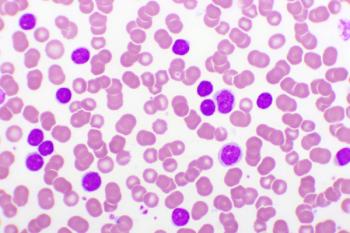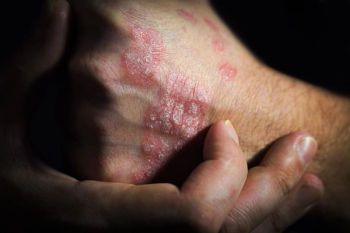
C difficile, COVID-19 Coinfection Risk Greatest in Older Women
Those with certain comorbidities, including peptic ulcer disease and renal failure, were at additional risk of developing Clostridioides difficile infection.
This article was originally published by
A
Investigators led by Xheni Deda, MD, of the University of Missouri School of Medicine, used the National Inpatient Sample database to identify adults hospitalized with a primary diagnosis of COVID-19 in 2020 and those with a secondary diagnosis of CDI. Ultimately, 1,045,125 COVID-19 hospitalizations were identified, of which 4920 had a coinfection of CDI.
Overall, patients coinfected were more likely to be older White females (mean age, 69.9 years; 54.1%, female; 60%, White) and had nearly double the length of hospital stay (14.1 vs. 7.42 days; P < .001) compared with those without CDI coinfection. In addition, this group saw higher total hospital costs ($42,336 vs. $18,974; P < .001) and higher inpatient mortality, with a mortality rate of 21.6% in the CDI and COVID-19 group compared with 11% in the COVID-19 group without CDI (P < .001).
Age also played a significant role in mortality, with previous research confirming this study’s findings of increased risk with older age, with a 6-fold greater mortality rate seen in those 80 years and older. These findings also reinforce prior research demonstrating an increased risk of CDI infection by 3% for each additional day of hospitalization.
Beyond female gender, comorbidities independently associated with CDI infection in patients with diagnosed COVID-19 included peptic ulcer disease, renal failure, weight loss, diabetes with complications, congestive heart failure, cardiac arrhythmias, liver disease, and nonmetastatic solid organ tumors. The researchers associated peptic ulcer disease (odds ratio [OR], 2.3; 95% CI, 1.1-4.7) and renal failure (OR, 1.9; 95% CI, 1.6-2.4) with the highest odds of developing CDI infection. They also noted that proton pump inhibitor use is likely a contributor to the increased risk in this population.
“These findings emphasize the importance of considering CDI as a potential complication in COVID-19 patients, particularly in the presence of identified risk factors,” the authors wrote. Further, it emphasizes the importance of prevention strategies to help curb the strain on health care resources.
CDI testing, diagnosis, and treatment remain a challenge in today’s health care sphere. There are ongoing conversations to improve metrics around CDI, including attributing infections to hospital onset, which has measurable implications for CMS reimbursement.
Recent research by Kalvin Yu, MD, and colleagues sought to improve criteria for
References
1. Deda X, Elfert K, Gandhi M, et al. Clostridioides difficile infection in COVID-19 hospitalized patients: a nationwide analysis. Gastroenterol Res. 2023;16(4):234-239. doi:10.14740/gr1639
2. Yu KC, Ye G, Edwards JR, et al. Treated, hospital-onset Clostridiodes difficile infection: an evaluation of predictors and feasibility of benchmarking comparing 2 risk-adjusted models among 265 hospitals. Infect Control Hosp Epidemiol. 2023;1-9. doi:10.1017/ice.2023.124
Newsletter
Stay ahead of policy, cost, and value—subscribe to AJMC for expert insights at the intersection of clinical care and health economics.












































